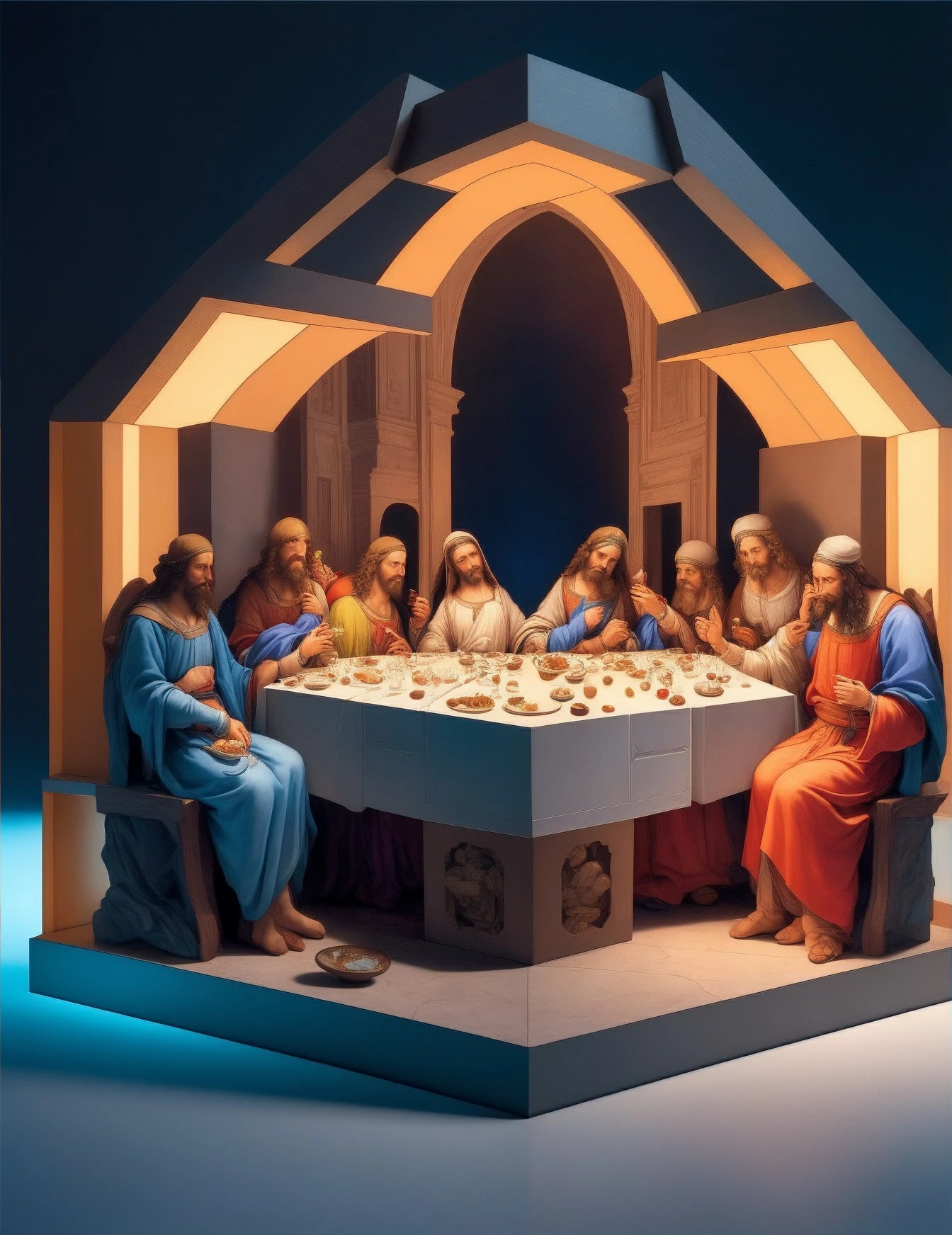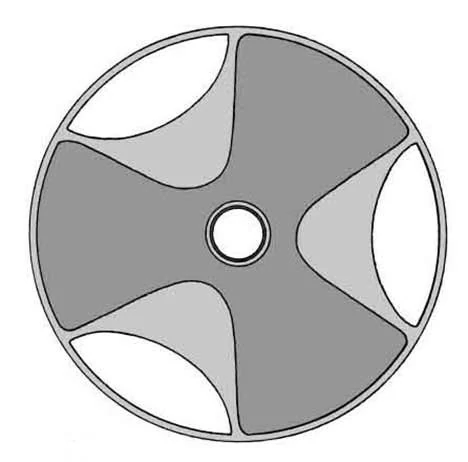The Last Supper (Il cenacolo) is a mural painting executed between 1495 and 1498 by the multifaceted Leonardo da Vinci (1452-1519). It was commissioned by Ludovico Sforza for the refectory of the Convent of Santa Maria delle Grazie in Milan, Italy. Leonardo did not charge for it. The scene recreates the last Passover meal between Jesus and his apostles, from the account described in the Gospel of John, chapter 13.
Analysis of the fresco The Last Supper by Leonardo da Vinci
Ernst Gombrich says that in this work Leonardo was not afraid to make the necessary drawing corrections to give it total naturalism and verisimilitude, something rarely seen in previous mural painting, characterized by deliberately sacrificing the correctness of the drawing for the sake of other elements. This was Leonardo’s intention in mixing tempera and oil painting for this work.
In his version of the Last Supper, Leonardo wanted to show the exact moment of the disciples’ reaction when Jesus announces the betrayal of one of those present (Jn 13:21-31). The shock is evident in the painting thanks to the dynamism of the characters who, instead of remaining inert, react energetically to the announcement.
For the first time in art of this type, Leonardo introduces great drama and tension among the characters, which is not at all common. This does not prevent him from achieving that the composition enjoys great harmony, serenity and balance, thus preserving the aesthetic values of the Renaissance.
The characters of The Last Supper
In The Notebooks of Leonardo da Vinci the characters are identified, who appear grouped in trios with the exception of Jesus. From left to right they are:
First group: Bartholomew, James the Less and Andrew.
Second group: Judas Iscariot, Peter and John, called «the beardless one».
Central character: Jesus.
Third group: Thomas, indignant James the Elder and Philip.
Fourth group: Matthew, Judas Thaddeus and Simon.
It stands out the fact that Judas, unlike the iconographic tradition, is not separated from the group, but is integrated among the diners, in the same group as Peter and John. With this, Leonardo introduces an innovation in the fresco that puts it at the center of the artistic references of his time; moreover, Leonardo manages to give a truly differentiated treatment to each of the characters in the scene. Thus, he does not generalize the representation of them in a single type, but each one is endowed with his own physical and psychological traits.
Also surprising is the fact that Leonardo puts a knife in Peter’s hands, in allusion to what will happen shortly after in the arrest of Christ. With this, Leonardo manages to delve into the psychology of Peter’s character, undoubtedly one of the most radical apostles.
Perspective of The Last Supper
Leonardo uses the vanishing point perspective or linear perspective, characteristic of Renaissance art. The main focus of his perspective will be Jesus, the center of reference of the composition. Although all points converge on Jesus, his open and expansive position with outstretched arms and calm gaze contrasts and balances the work.
Leonardo’s particular use of vanishing point perspective, combined with the representation of a classical architectural space, creates the illusion that the refectory space is enlarged to include such important diners. This is part of the illusionistic effect achieved through the principle of verisimilitude.
The illumination
One of the elements typical of the Renaissance was the use of a system of windows, to which Leonardo had much recourse. These made it possible to introduce, on the one hand, a source of natural light, and on the other, spatial depth. Pierre Francastel referred to these windows as an anticipation of what would become in the coming centuries the «veduta», that is, the view of the landscape.
The illumination of the fresco The Last Supper comes from the three windows in the background. Behind Jesus, a wider window opens the space, also demarcating the importance of the protagonist of the scene. In this way, Leonardo also avoids the use of the halo of sanctity that was normally arranged around the head of Jesus or the saints.
The philosophical approach
Leonardo da Vinci understood painting as a science, since it involved the construction of knowledge: philosophy, geometry, anatomy and more were disciplines that Leonardo applied to painting. The artist did not limit himself to simply imitating reality or to constructing a principle of verisimilitude by pure formalism. On the contrary, behind each of Leonardo’s works there was a more rigorous approach.
According to some researchers, Leonardo would have reflected in the fresco of The Last Supper his philosophical conception of the so-called Platonic triad, highly valued in those years. The Platonic triad would be formed by the values of Truth, Goodness and Beauty, following the line of the Florentine Platonic Academy, of Ficino and Mirandola. This school of thought defended Neoplatonism in opposition to Aristotelianism, and sought to find a reconciliation of Christian doctrine with Plato’s philosophy.
The Platonic triad is represented in some way in three of the four groups of characters, since the group with Judas would be a rupture. It is presumed, therefore, that the group on the far right of the fresco could be the representation of Plato, Ficino and Leonardo himself self-portrayed, who have a discussion about the truth of Christ.
The third group, on the other hand, would be interpreted by some scholars as an evocation of platonic love in search of beauty. This group could at the same time represent the Holy Trinity due to the gestures of the apostles. Thomas points to the Most High, James the Greater extends his arms as if evoking the body of Christ on the cross and, finally, Philip brings his hands to his chest, as a sign of the interior presence of the Holy Spirit.
Más información: La Última Cena, la delicada obra maestra de Leonardo da Vinci (nationalgeographic.com.es)

And finally I leave you this picture and judge if next to Jesus was a man or a woman?
and long live the conspiracies!



